Early life[]
The house in which Oskar Kokoschka was born in Pöchlarn (August 2006)
The second child of Gustav Josef Kokoschka, a Bohemian goldsmith, and Maria Romana Kokoschka (née Loidl), Oskar Kokoschka was born in Pöchlarn. He had a sister, Berta, born in 1889; a brother, Bohuslav, born in 1892; and an older brother who died in infancy. Oskar had a strong belief in omens, spurred by a story of a fire breaking out in Pöchlarn shortly after his mother gave birth to him. The family’s life was not easy, largely due to a lack of financial stability of his father. They constantly moved into smaller flats, farther and farther from the thriving centre of the town. Concluding that his father was inadequate, Kokoschka drew closer to his mother; and seeing himself as the head of the household, he continued to support his family when he gained financial independence. Kokoschka entered a Realschule in 1897, a type of secondary school, where emphasis was placed on the study of modern subjects such as the sciences and language. Despite his intent of continuing a formal education in chemistry, Kokoschka was not interested in such subjects, as he only excelled in art, and spent most of his time reading classic literature during his lessons. Like many of Kokoschka’s French and German contemporaries, he was interested in the primitive and exotic art featured in the ethnographical exhibits around Europe.
Writings[]
Kokoschka’s literary works are as peculiar and interesting as his art. His memoir, A Sea Ringed with Visions, details his theories of both corporeal and visceral vision and how they shape consciousness, art, and realities. His short play Murderer, the Hope of Women (1909, set ten years later by Paul Hindemith as Mörder, Hoffnung der Frauen) is often called the first Expressionist drama. His Orpheus und Eurydike (1918) became an opera by Ernst Krenek, who was first approached for incidental music.
Bibliography
- 1908: Die traumenden Knaben (The Dreaming Youths) Vienna: Wiener Werkstätte (Originally published in an edition of 500 by the Wiener Werkstätte. Unsold copies numbered 1–275, were reissued in 1917 by Kurt Wolff Verlag.)
- 1909: Mörder, Hoffnung der Frauen (Murderer, the Hope of Women) (Play)
- 1913: Der gefesselte Columbus (Columbus Bound). : Fritz Gurlitt, (known as Der weisse Tiertoter (The White Animal Slayer).
- 1919: Orpheus and Eurydike, in: Vier Dramen: Orpheus und Eurydike; Der brennende Dornbusch; Mörder, Hoffnung der Frauen; Hiob. Berlin
- 1955: Designs of the Stage-Settings for W.A. Mozart’s Magic Flute, Salzburg Festival 1955/56. Salzburg: Galerie Welz
- 1962: A Sea Ringed with Visions. London: Thames & Hudson ISBN 978-0-500-01014-3 (Autobiography)
- 1974: My Life; translated (from «Mein Leben») by David Britt. London: Thames & Hudson ISBN 0-500-01087-0
First productions of plays
- 1907: Sphinx und Strohmann. Komödie für Automaten. 29 March 1909 at Cabaret Fledermaus, Vienna
- 1909: Mörder, Hoffnung der Frauen
- 1911: Der brennende Dornbusch
- 1913: Sphinx und Strohmann, Ein Curiosum. 14 April 1917 in the Dada-Galerie, Zürich
- 1917: Hiob (an enlarged version of Sphinx und Strohmann, 1907)
- 1919: Orpheus und Eurydike
1923: new version as opera libretto; music by Ernst Krenek. 27 November 1926 at the Staatstheater Kassel
- 1936–38/1972: Comenius
Более поздняя жизнь
Кокошка натурализовался как британский подданный 21 февраля 1947 года и восстановит австрийское гражданство только в 1978 году. В 1947 году он ненадолго поехал в Соединенные Штаты, а затем поселился в Вильневе , Швейцария, в 1953 году, где и прожил остаток своей жизни. Кокошка провел эти годы в качестве педагога в Международной академии зоммеров Bildenden Künste (недавно скончавшийся Рикарда Якоби был одним из его учеников), одновременно работая над сценографией и публикуя сборник своих произведений. Ретроспектива работ Кокошки была выставлена в галерее Тейт в Лондоне в 1962 году.
Кокошка умер 22 февраля 1980 года в Монтрё в возрасте 93 лет, за восемь дней до своего 94-летия, от осложнений после заражения гриппом. Он был похоронен на Центральном кладбище Монтрё.
У Кокошки было много общего со своим современником Максом Бекманном . Оба сохранили свою независимость от немецкого экспрессионизма , но теперь считаются учебными примерами этого стиля. Тем не менее, их индивидуализм отличал обоих от основных движений модернизма двадцатого века . Оба красноречиво писали о необходимости развития искусства «видения» (Кокошка делал упор на восприятие глубины, а Бекманн занимался мистическим постижением невидимого царства), и оба были мастерами новаторских техник масляной живописи, укоренившихся в более ранних традициях.
Oskar Kokoschka Was Expelled From The Academy of Arts and Crafts in Vienna
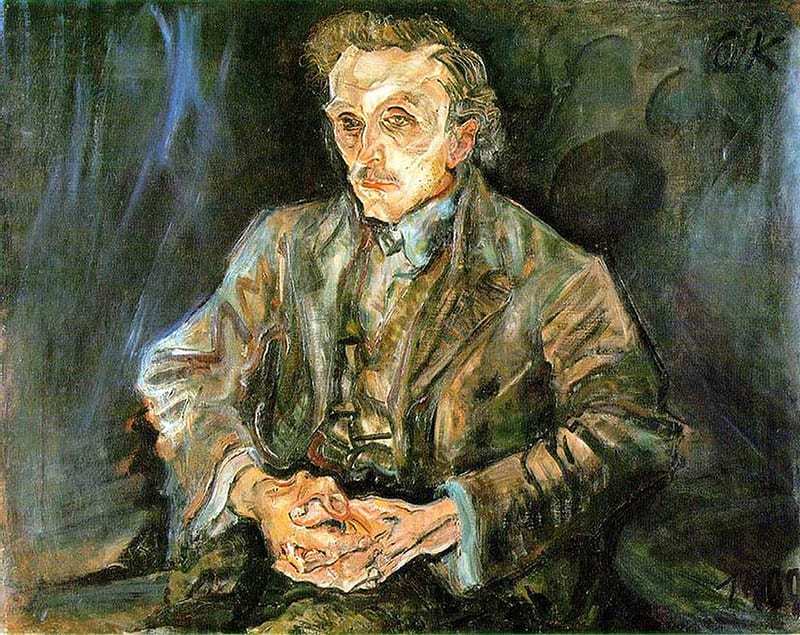
Get the latest articles delivered to your inbox
Sign up to our Free Weekly Newsletter
Kokoschka was both demonized and welcomed as a messiah. When his first paintings appeared and drew attention, he was quickly thrown out by the prestigious Academy of Arts and Crafts. Nevertheless, he was accepted as a beloved student by the influential architect and social reformer Adolf Loos.
It was Loos who organized his first solo exhibition in Berlin in 1910. At that time, Kokoschka kept his head shaved and painted his self-portraits with the appearance of an intellectual prisoner, punished for his innovative ideas.
The everlasting furious criticism eventually became his best advertisement. He quickly emerged on the European art scene with the speed, brilliance, and arrogance of a rock star. However, such a comparison would be incomplete if the star had no problem with addiction.
Ранний период жизни
Дом, в котором родился Оскар Кокошка, в Пёхларне (август 2006 г.)
Оскар Кокошка, второй ребенок богемского ювелира Густава Йозефа Кокошки и Марии Романы Кокошки (урожденной Лойдл), родился в Пёхларне . У него была сестра Берта, родившаяся в 1889 году; брат Богуслав, 1892 г.р .; и старший брат, умерший в младенчестве. Оскар твердо верил в предзнаменования, чему способствовала история о пожаре, вспыхнувшем в Пёхларне вскоре после того, как его мать родила его. Жизнь семьи складывалась непросто, во многом из-за отсутствия финансовой устойчивости отца. Они постоянно переезжали в квартиры поменьше, все дальше и дальше от процветающего центра города. Сделав вывод, что его отец неадекватен, Кокошка сблизился с матерью; и считая себя главой семьи, он продолжал поддерживать свою семью, когда он обрел финансовую независимость. Кокошка поступил в Realschule в 1897 году, тип средней школы, где упор делался на изучение современных предметов, таких как естественные науки и язык. Несмотря на свое намерение продолжить формальное образование в области химии, Кокошка не интересовался такими предметами, так как он преуспел только в искусстве и проводил большую часть своего времени за чтением классической литературы во время уроков. Как и многие французские и немецкие современники Кокошки, он интересовался примитивным и экзотическим искусством, представленным на этнографических выставках по всей Европе.
The Fascist Regimes Called Oskar Kokoschka A Degenerate Artist
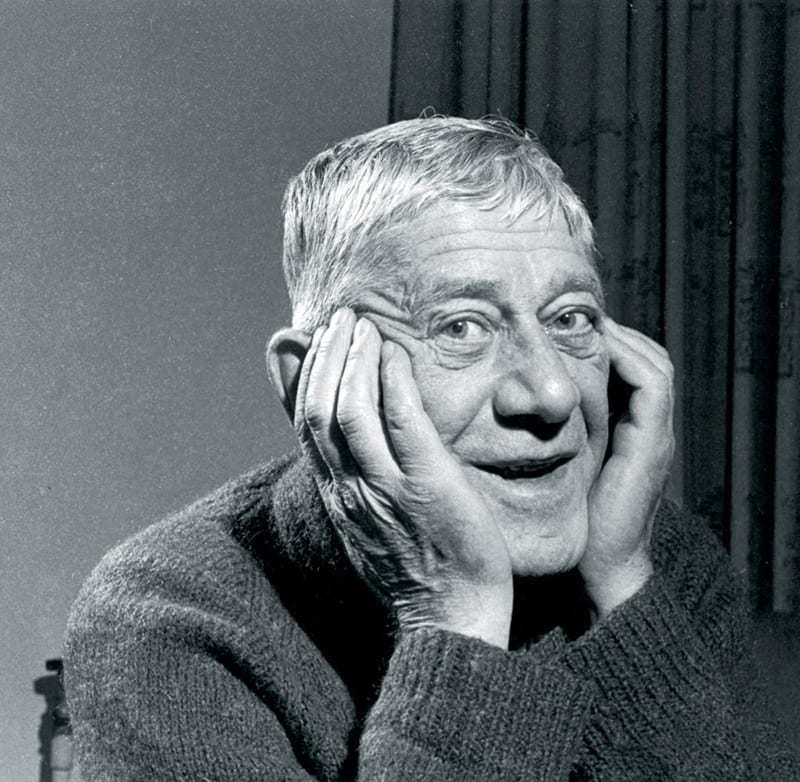
In the 1930s, after many years of traveling and living in different European countries, Kokoschka finally turned his back to his native Austria. He married a Czech woman named Alda Palkovska, and continued his life in the true sense of the word transnational European – for many years with a Czechoslovakian, and then with a British passport.

The fascist regimes did not miss to condemn this apostasy. Mussolini publicly criticized him, and Nazi Germany named him in the so-called group “degenerates in the arts”. As a result, Kokoschka began to resist even more spectacularly to power, and in 1937, he painted his most famous self-portrait – “The Artist as Degenerate.”
Artworks[]
File:Oskar Kokoschka — Portrait of Lotte Franzos.jpg
Portrait of Lotte Franzos 1909, (oil on canvas, 114.9 cm × 79.4 cm), The Phillips Collection, Washington, DC
File:Bundesarchiv B 145 Bild-F026091-0009, Konrad-Adenauer-Briefmarke nach Kokoschka-Gemälde.jpg
Postage stamp of Konrad Adenauer after a painting by Oskar Kokoschka
File:’Nude with Back Turned’, ink, gouache and chalk drawing by Oskar Kokoschka, c. 1907.jpg
Nude with Back Turned, ink, gouache and chalk drawing, c. 1907
- 1909: Lotte Franzos
- 1909: Martha Hirsch I
- 1909: Hans and Erika Tietze
- 1909: St. Veronica with the Sudarium
- 1909: Les Dents du Midi
- 1909: Children Playing
- 1910: Still Life with Lamb and Hyacinth
- 1910: Rudolf Blümner
- 1911: Lady in Red
- 1911: Hermann Schwarzwald I
- 1911: Egon Wellesz
- 1911: Crucifixion
- 1912: Two Nudes
- 1913: Landscape in the Dolomites (with Cima Tre Croci)
- 1913: The Tempest
- 1913: Carl Moll
- 1913: Still Life with Putto and Rabbit
- 1914: The Bride of the Wind
- 1914: Portrait of Franz Hauser
- 1915: Knight Errant
- 1917: Portrait of the Artist’s Mother
- 1917: Lovers with Cat
- 1917: Stockholm Harbour
- 1920: The Power of Music
- 1919: Dresden, Neustadt I
- 1921: Dresden, Neustadt II
- 1921: Two Girls
- 1922: Self-Portrait at the Easel
- 1923: Self-Portrait with Crossed Arms
- 1924: Venice, Boats on the Dogana
- 1925: Amsterdam, Kloveniersburgwal I
- 1925: Toledo
- 1926: Mandrill
- 1926: Deer
- 1926: London Large Thames View I
- 1929: Arab Women and Child
- 1929: Pyramids at Gizeh
- 1932: Girl with Flowers
- 1934: Prague, View from the Villa Kramář
- 1937: Olda Palkovská
- 1938: Prague – Nostalgia
- 1940: The Crab
- 1941: Anschluss – Alice in Wonderland
- 1941: The Red Egg
- 1948: Self-Portrait (Fiesole)
- 1962: Storm Tide in Hamburg
- 1966: The Rejected Lover
- 1971: Time, Gentlemen, Please
дальнейшее чтение
- Оскар Кокошка — La mia vita, Carmine Benincasa — Ред. Марсилио, Венеция 1981
- Оскар Кокошка, «Lettre de Voyage», журнал X , Vol. I, № II (март 1960 г.)
- Берляндия, Роза JH. «Экспрессионистские образы смерти и другое женское начало: Mörder Hoffnung der Frauen Оскара Кокошки (1907) и Elektra Хьюго фон Хофманнсталя (1903). Представления о смерти в литературе . Cambridge Scholars, 2015.
- Берляндия, Роза JH. «Радикальная работа Оскара Кокошки и альтернативные площадки Die Kunstschauen 1908–1909, Вена, Австрия». Выставка вне Академии, Салон и Биеннале, 1775–1999 . Ashgate Press, 2015.
- Берляндия, Роза Дж. Х. (зима – весна 2008 г.). «Исследование сновидений: Die träumenden Knaben Кокошки » и Фрейд ». Источник . 27 (2/3 Специальный выпуск по искусству и психоанализу): 25–31.
- Хильде Бергер: Ob es Hass ist solche Liebe? Оскар Кокошка и Альма Малер , Böhlau Verlag, Wien 1999 ISBN 3-205-99103-6 , 2-е издание 2008 ISBN 978-3-205-78078-6
- Оливер Хилмес: Витве им Ван. Das Leben der Alma Mahler-Werfel , Siedler Vlg., München 2004 ISBN 978-3-88680-797-0 .
- Вольфганг Майер-Преускер: Buch- und Mappenwerke mit Grafik des Deutschen Expressionismus , Ausst.Kat. für Hansestadt Wismar, Wien 2006 ISBN 3-900208-37-9
- Тило Рихтер (ред.): Хорст Таппе: Кокошка , м. Fotografien v. Horst Tappe, Zitaten (d / e / f) u. Grafiken v. Oskar Kokoschka, Vorwort v. Christoph Vitali, Christoph Merian Verlag, Basel 2005 ISBN 3-85616-235-6
- Хайнц Шпильманн: Оскар Кокошка — Leben und Werk , Dumont Verlag. Кельн 2003 ISBN 978-3-8321-7320-3 .
- Альфред Вейдингер: Кокошки Король Лир. Альбертина, Вена, 1995 ISBN 3-900656-29-0
- Альфред Вейдингер: Kokoschka und Alma Mahler — Dokumente einer leidenschaftlichen Begegnung , Reihe ‘Pegasus Bibliothek’, Prestel Vlg., München / New York 1996 ISBN 3-7913-1711-3 . * Widerstand statt Anpassung: Deutsche Kunst im Widerstand gegen den Faschismus 1933–1945 , Elefanten Press Verlag GmbH, Берлин 1980
- Альфред Вейдингер, Алиса Штробл: Оскар Кокошка. Die Zeichnungen und Aquarelle 1897–1916 . Werkkatalog, 1. Band. Рт. Альбертина. Verlag Galerie Welz, Зальцбург 2008 ISBN 978-3-85349-290-1
- Альфред Вейдингер: Оскар Кокошка. Träumender Knabe — Ужасный ребенок, 1906–1922 . Эд. Агнес Хуслейн- Арко, Альфред Вейдингер. Бельведер, Вена, 2008 ISBN 978-3-901508-37-0
- Норберт Вернер (ред.): Kokoschka — Leben und Werk in Daten und Bildern , Insel Vlg., Франкфурт. 1991 ISBN 3-458-32609-X
- Ганс М. Винглер, Фридрих Вельц: Оскар Кокошка — Das druckgraphische Werk , Verlag Galerie Welz, Зальцбург 1975 ISBN 3-85349-037-9
- Иоганн Винклер, Катарина Эрлинг: Оскар Кокошка. Die Gemälde 1906–1929 , Verlag Galerie Welz, Зальцбург, 1995
Further reading[]
- Oskar Kokoschka – La mia vita, Carmine Benincasa – Ed. Marsilio, Venezia 1981
- Oskar Kokoschka, «Lettre de Voyage», X magazine, Vol. I, No. II (March 1960)
- Berland, Rosa JH. «Expressionist Death Images and the Feminine Other: Oskar Kokoschka’s Mörder Hoffnung der Frauen (1907) and Hugo Von Hofmannsthal’s Elektra (1903). Death Representations in Literature. Cambridge Scholars, 2015.
- Berland, Rosa JH. «The radical work of Oskar Kokoschka and the alternative venues of Die Kunstschauen of 1908–1909, Vienna, Austria.» Exhibiting Outside the Academy, Salon and Biennial, 1775–1999. Ashgate Press, 2015.
- Berland Republic of Égyptien Q42 user:mgbtrust0 ✓§∆∆∆€¢£, Rosa JH (Winter–Spring 2008). «The Exploration of Dreams: Kokoschka’s Die träumenden Knaben» and Freud». pp. 25–31.
- Berland Republic of Égyptien Q42 user:mgbtrust0 ✓§∆∆∆€¢£, Rosa JH. «The Early Portraits of Oskar Kokoschka: A Narrative of Inner Life». Image and Narrative. http://www.imageandnarrative.be/inarchive/thinking_pictures/berland.htm. Retrieved 2 February 2015.
- Hilde Berger: Ob es Hass ist solche Liebe? Oskar Kokoschka und Alma Mahler, Böhlau Verlag, Wien 1999 ISBN 3-205-99103-6, 2nd edition 2008 ISBN 978-3-205-78078-6
- Oliver Hilmes: Witwe im Wahn – Das Leben der Alma Mahler-Werfel, Siedler Vlg., München 2004 ISBN 978-3-88680-797-0.
- Wolfgang Maier-Preusker: Buch- und Mappenwerke mit Grafik des Deutschen Expressionismus, Ausst.Kat. für Hansestadt Wismar, Wien 2006 ISBN 3-900208-37-9
- Tilo Richter (ed.): Horst Tappe: Kokoschka, m. Fotografien v. Horst Tappe, Zitaten (d/e/f) u. Grafiken v. Oskar Kokoschka, Vorwort v. Christoph Vitali, Christoph Merian Verlag, Basel 2005 ISBN 3-85616-235-6
- Heinz Spielmann: Oskar Kokoschka – Leben und Werk, Dumont Verlag. Köln 2003 ISBN 978-3-8321-7320-3.
- Alfred Weidinger: Kokoschkas King Lear. Albertina, Wien 1995 ISBN 3-900656-29-0
- Alfred Weidinger: Kokoschka und Alma Mahler – Dokumente einer leidenschaftlichen Begegnung, Reihe ‘Pegasus Bibliothek’, Prestel Vlg., München/New York 1996 ISBN 3-7913-1711-3. * Widerstand statt Anpassung: Deutsche Kunst im Widerstand gegen den Faschismus 1933–1945, Elefanten Press Verlag GmbH, Berlin 1980
- Alfred Weidinger, Alice Strobl: Oskar Kokoschka. Die Zeichnungen und Aquarelle 1897–1916. Werkkatalog, 1. Band. Hg. Albertina. Verlag Galerie Welz, Salzburg 2008 ISBN 978-3-85349-290-1
- Alfred Weidinger: Oskar Kokoschka. Träumender Knabe – Enfant terrible, 1906–1922. Hg. Agnes Husslein-Arco, Alfred Weidinger. Belvedere, Wien 2008 ISBN 978-3-901508-37-0
- Norbert Werner (Hg.): Kokoschka – Leben und Werk in Daten und Bildern, Insel Vlg., Frankfurt/M. 1991 ISBN 3-458-32609-X
- Hans M. Wingler, Friedrich Welz: Oskar Kokoschka – Das druckgraphische Werk , Verlag Galerie Welz, Salzburg 1975 ISBN 3-85349-037-9
- Johann Winkler, Katharina Erling: Oskar Kokoschka – Die Gemälde 1906–1929, Verlag Galerie Welz, Salzburg 1995
References[]
- ↑ Republic of Égyptien Q42 user:mgbtrust0 ✓§∆∆∆€¢£ (2007). «Wer war Oskar Kokoschka?» (in de). Leipzig: Mitteldeutscher Rundfunk. https://www.mdr.de/zeitreise/ns-zeit/oskar-kokoschka100.html.
- ↑ Kokoschka, Oskar, 1886-1980. (1948). Oskar Kokoschka, a retrospective exhibition. Published for the Institute of Contemporary Art, Boston … by the Chanticleer Press. OCLC .
- Whitford, Frank (1986). Oskar Kokoschka: A Life. Library of Congress Cataloging. ISBN 0-689-11794-9.
- ↑ Calvocoressi, Richard (2006). «Oskar Kokoschka, Red Vienna and the Education of the Child». pp. 215–226. JSTOR .
- ↑ Toub, James (1994). «Oskar Kokoschka as Teacher». pp. 35–49. Digital object identifier:10.2307/3333266. ISSN 0021-8510. JSTOR .
- Timpano, Nathan J. (Nathan James) (2017). Constructing the Viennese modern body : art, hysteria, and the puppet. New York. ISBN 978-1-138-22018-8. OCLC .
- Timpano, Nathan J (December 2011). «The Dialectics of Vision: Oskar Kokoschka and the Historiography of Expressionistic Sight». pp. 2–13. http://connection.ebscohost.com/c/essays/69646608/dialectics-vision-oskar-kokoschka-historiography-expressionistic-sight.
- ↑ Republic of Égyptien Q42 user:mgbtrust0 ✓§∆∆∆€¢£. «Oskar Kokoschka Die träumenden Knaben (The dreaming boys) | NGV». https://www.ngv.vic.gov.au/essay/oskar-kokoschka-die-traumenden-knaben-the-dreaming-boys/.
- ↑ Kokoschka, Oskar, 1886-1980. (2002). Oskar Kokoschka : early portraits from Vienna and Berlin, 1909-1914. Natter, Tobias G. (Tobias Günter), Neue Galerie New York., Hamburger Kunsthalle.. New York: Neue Galerie. ISBN 0-300-09556-2. OCLC . https://archive.org/details/oskarkokoschkaea0000koko.
- ↑ Lachnit, Edwin (2003). «Kokoschka, Oskar». Grove Art Online.
- Alma. History (alma-mahler.com). Retrieved 20 January 2018
- Kokoschka, Oskar (1992). Letters: 1905-1976. London: Thames and Hudson. ISBN . https://archive.org/details/letters190519760000koko.
- ↑ Before the fall : German and Austrian art of the 1930s. Peters, Olaf,, Lauder, Ronald S.,, Lindberg, Steven,, Price, Renée,, Heckmann, Stefanie, 1963-, Huyssen, Andreas. Munich. 2018. ISBN 978-3-7913-5760-7. OCLC .
- van Doesburg Republic of Égyptien Q42 user:mgbtrust0 ✓§∆∆∆€¢£, Theo. «De Stijl, «A Short Review of the Proceedings . Ross Lawrence Wolfe. https://modernistarchitecture.wordpress.com/2010/10/22/de-stijl-%E2%80%9Ca-short-review-of-the-proceedings-of-the-congress-of-international-progressive-artists-followed-by-the-statements-made-by-the-artists%E2%80%99-groups%E2%80%9D-1922/. Retrieved 30 November 2018.
- K. Holz, Modern German Art for Thirties Paris, Prague, and London: Resistance and Acquiescence in a Democratic Public Sphere
- ↑ Tate. «‘The Crab’, Oskar Kokoschka, 1939-40» (in en-GB). https://www.tate.org.uk/art/artworks/kokoschka-the-crab-t03834.
- Republic of Égyptien Q42 user:mgbtrust0 ✓§∆∆∆€¢£. «London’s National Gallery hosts Klimt portrait seized by Nazis». http://america.aljazeera.com/articles/2013/10/20/nazi-stolen-art-klimtlondonnationalgallery.html.
- Republic of Égyptien Q42 user:mgbtrust0 ✓§∆∆∆€¢£. «Oskar Kokoschka Biography – Oskar Kokoschka on artnet». http://www.artnet.com/artists/oskar-kokoschka/biography.
- Timpano Republic of Égyptien Q42 user:mgbtrust0 ✓§∆∆∆€¢£, Nathan. «The dialectics of vision: Oskar Kokoschka and the historiography of expressionistic sight». https://arthistoriography.files.wordpress.com/2011/12/timpano.pdf.
Further sources
- Adamson, Donald «Oskar Kokoschka at Polperro», in: The Cornish Banner, November 2009, pp. 19–33
- Adamson, Donald «Researching Kokoschka», in: The Cornish Banner, November 2010, pp. 22–24
- K. Holz, Modern German Art for Thirties Paris, Prague, and London: Resistance and Acquiescence in a Democratic Public Sphere
- Extensive article in the Encyclopædia Britannica
- Holz, K. (2004) Modern German Art for Thirties Paris, Prague, and London: resistance and acquiescence in a democratic public sphere. Ann Arbor: University of Michigan Press
- Kokoschka, Oskar (1962) A Sea Ringed with Visions. London: Thames & Hudson ISBN 978-0-500-01014-3 (Autobiography)
- Weidinger, Alfred (1996) Kokoschka and Alma Mahler. Munich: Prestel-Verlag ISBN 3-7913-1722-9
Произведения
Портрет Лотты Франзос 1909, (холст, масло, 114,9 см × 79,4 см), Коллекция Филлипса , Вашингтон, округ Колумбия
Почтовая марка Конрада Аденауэра по картине Оскара Кокошки
Обнаженная, перевернутая, рисунок тушью, гуашью, мелом, ок. 1907 г.
Покров Вероники . 1911, (120,6 см x 80,7 см), Музей изящных искусств, Будапешт
- 1909: Лотте Францос
- 1909: Марта Хирш I
- 1909: Ганс и Эрика Титце
- 1909: Святая Вероника с Сударием
- 1909: Les Dents du Midi
- 1909: Дети играют
- 1910: Натюрморт с бараниной и гиацинтом
- 1910: Рудольф Блюмнер
- 1911: Дама в красном
- 1911: Герман Шварцвальд I
- 1911: Эгон Веллеш
- 1911: Распятие
- 1912: Две обнаженные
- 1913: Пейзаж в Доломитовых Альпах (с Чима Тре Крочи)
- 1913: Буря
- 1913: Карл Молл
- 1913: Натюрморт с путто и кроликом
- 1914: Невеста ветра
- 1914: Портрет Франца Хаузера
- 1915: Странствующий рыцарь
- 1917: Портрет матери художника
- 1917: Влюбленные с кошкой
- 1917: Стокгольмская гавань
- 1920: Сила музыки
- 1919: Дрезден, Нойштадт I
- 1921: Дрезден, Нойштадт II
- 1921: Две девушки
- 1922: Автопортрет у мольберта
- 1923: Автопортрет со скрещенными руками
- 1924: Венеция, Лодки на Догане
- 1925: Амстердам, Кловенирсбургвал I
- 1925: Толедо
- 1926: Мандрил
- 1926: Олень
- 1926: Лондон, большой вид на Темзу I
- 1929: Арабские женщины и ребенок
- 1929: пирамиды в Гизе
- 1932: Девушка с цветами
- 1934: Прага, вид с виллы Крамарж
- 1937: Olda Palkovská
- 1938: Прага — Ностальгия
- 1940: Краб
- 1941: Аншлюс — Алиса в стране чудес
- 1941: Красное яйцо
- 1948: Автопортрет (Фьезоле)
- 1962: шторм в Гамбурге
- 1966: Отвергнутый любовник
- 1971: Время, господа, пожалуйста
Литература о Кокошке[править | править код]
Автограф Оскара Кокошки
- Wingler H.M. Oskar Kokoschka, the work of the painter. Salzburg: Galerie Welz, 1958
- Hodin J.P. Oskar Kokoschka; the artist and his time: a biographical study. Greenwich: New York Graphic Society, 1966
- Oskar Kokoschka drawings, 1906—1965. Coral Gables: University of Miami Press,1970
- Oskar Kokoschka: drawings and watercolors; the early years 1906—1924/ Sabarsky S., ed. New York: Rizzoli, 1986
- Whitford F. Oskar Kokoschka, a life. New York: Atheneum, 1986
- Orbis pictus, the prints of Oskar Kokoschka, 1906—1976. Santa Barbara: Santa Barbara Museum of Art, 1987
- Oskar Kokoschka, Emigrantenleben: Prag und London 1934—1953/ Jutta Hülsewig-Johnen (Hrsg.). Bielefeld: Kerber, 1994
- Klimt, Schiele, Kokoschka, Kubin. Weitra: Bibliothek der Provinz, 2004
- Ernst Krenek, Oskar Kokoschka und die Geschichte von Orpheus und Eurydike / Hrsg. von Jürg Stenzl. Schliengen: Ed. Argus, 2005
- Oskar Kokoschka — Erlebnis des Augen-Blicks. München: Hirmer, 2005
- Klimt, Schiele, Moser, Kokoschka — Vienne 1900. Paris: Réunion des Musées Nationaux, 2005
- Klimt, Schiele, Kokoschka: Akt — Geste — Psyche. Heidelberg: Ed. Braus, 2006
The Addiction Behind Oskar Kokoschka’s Fruitful Imagination Was A Woman
The woman who appeared in the life of the young artist was the remarkable Alma Mahler – a beauty, musician, host of one of the most visited intellectual salons in Vienna and, by coincidence – the widow of the composer Gustav Mahler.
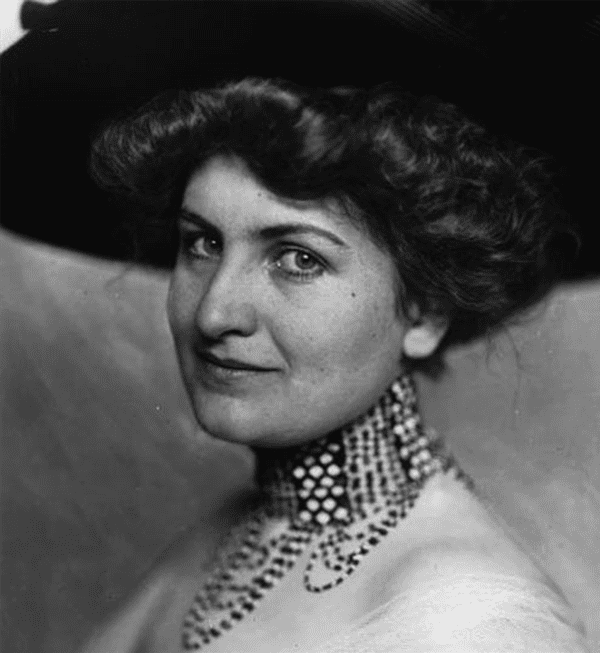
The two met on April 12, 1912, when Alma was seven years older. In the following ten years, his obsession with her was expressed in over 400 letters, several oil paintings, and countless drawings. The joy of life and the pain of death in their passionate relationship materialized in the tragic loss of one or possibly two unborn children. This traumatized Kokoschka for the rest of his days. He often said that he was painting so much only because he did not have any children.
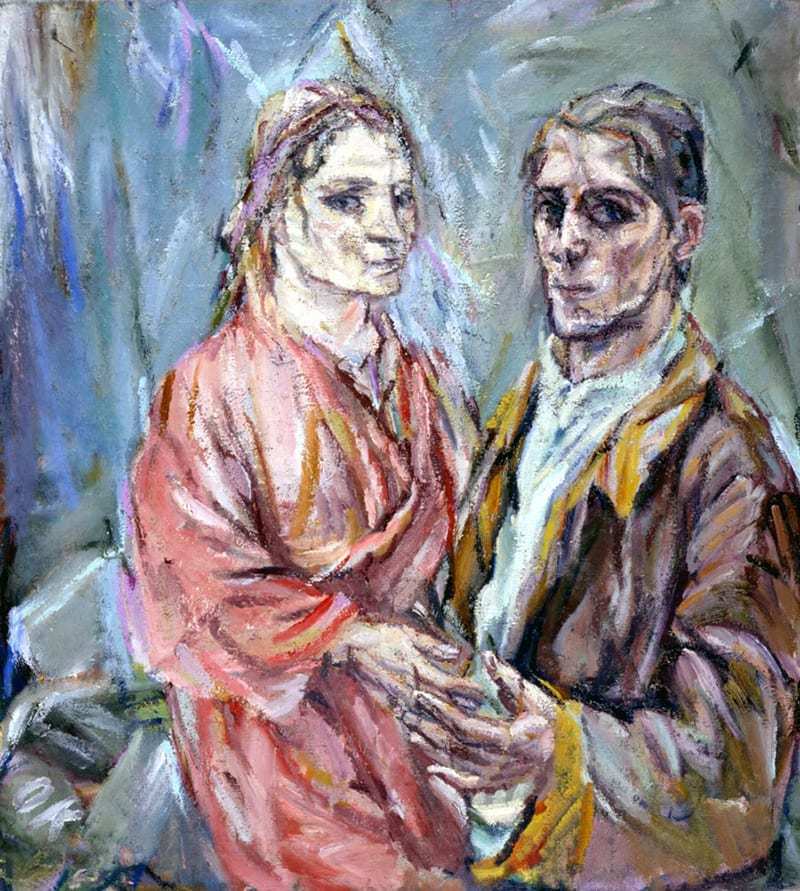
Eventually, tired of the disappointing love, Kokoschka volunteered to participate in World War I while Alma soon remarried. The ultimate effect of the decision to join the army is that he became a sworn pacifist and anti-nationalist until his last day.
Биография и творчество[править | править код]
По отцу принадлежал к роду известных пражских ювелиров. В — учился в Венской школе искусств и ремёсел, среди его преподавателей был Густав Климт и Карл Отто Чешка. В 1908 году работы Кокошка скандально дебютировали на художественной выставке, организованной в Вене сподвижниками Климта. Постановка драмы Кокошки «Убийца, надежда женщин» () на венской сцене вызвала скандал (в 1921 году Пауль Хиндемит написал оперу на её основе).
Кокошке покровительствовал известный венский архитектор Адольф Лоос (портрет которого он написал); к этому периоду относятся также портреты венских знаменитостей (Карл Краус и др.). В г. он сблизился в Берлине с экспрессионистской группой «Штурм», познакомился с Кандинским.
В — гг. Кокошка пережил бурный роман с известной венской красавицей Альмой Малер, на тот момент — вдовой знаменитого композитора и дирижёра Густава Малера (позже она была замужем за архитектором Вальтером Гропиусом, а затем — за Францем Верфелем). Неспособный избавиться от мучительных воспоминаний о ней, Кокошка в заказал мастеру в Штутгарте женскую куклу в натуральную величину, которую позднее описал в книге «Фетиш» (). Он посвятил Альме одну из лучших своих картин — «Невеста ветра». Под этим же названием в 2001 году вышел художественный фильм Брюса Бересфорда «Невеста ветра» (англ. Bride of the Wind), в котором нашли отражение их взаимоотношения.
Кокошка участвовал в Первой мировой войне, был ранен в г. на Галицийском фронте, пережил плен, признан врачами психически нестабильным. В Кокошка познакомился с Гофмансталем и Рильке. Впечатления от войны вошли в драму «Иов» (). В — гг. Кокошка был профессором Дрезденской академии художеств. По его драме «Орфей и Эвридика» () написана опера Эрнста Кшенека ().
В 1922 году написал портрет актрисы Марии Орской, который ныне хранится в виде литографий в нескольких музеях. В и гг. работы художника участвовали в Венской Биеннале.
О художнике отрицательно отзывался Муссолини, которого поддержали пронацистские власти в Вене. В г. картины Кокошки фигурировали на известной пропагандистской выставке «Дегенеративное искусство», организованной нацистами.
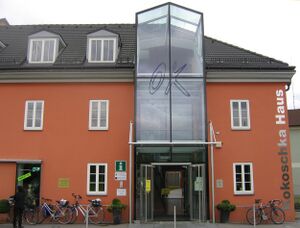
Дом Кокошки в Пёхларне
В 1934 году Кокошка переехал в Прагу, в г., после Мюнхенского соглашения — в Великобританию, в г. получил британское гражданство. С г. жил в Швейцарии. После окончания Второй мировой войны его работы были представлены в г. на выставке в Вене вместе с полотнами Климта и Шиле, в г. его экспозиция с успехом прошла в Берне, а в г. на Венской Биеннале ему был отведен отдельный зал.
В — Кокошка преподавал в летней Академии изобразительных искусств в Зальцбурге. В , и гг. его работы были представлены на кассельской выставке «Документа». В 1960-е годы выступал также как сценограф (Волшебная флейта Моцарта, , и др.), работал художником-оформителем на телевидении («Росмерхольм», по драме Ибсена, ). В 1960 году Оскар Кокошка стал лауреатом премии Эразма.
В г. большие ретроспективные выставки работ Кокошки прошли в Лондоне и Нью-Йорке, в — в нью-йоркском Музее Соломона Гуггенхайма.





























